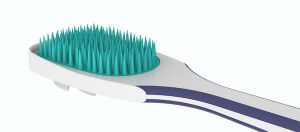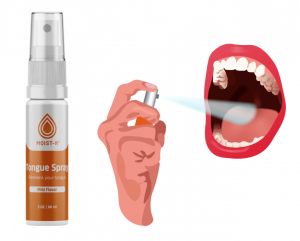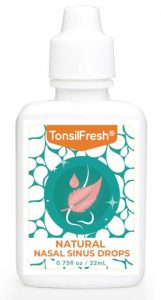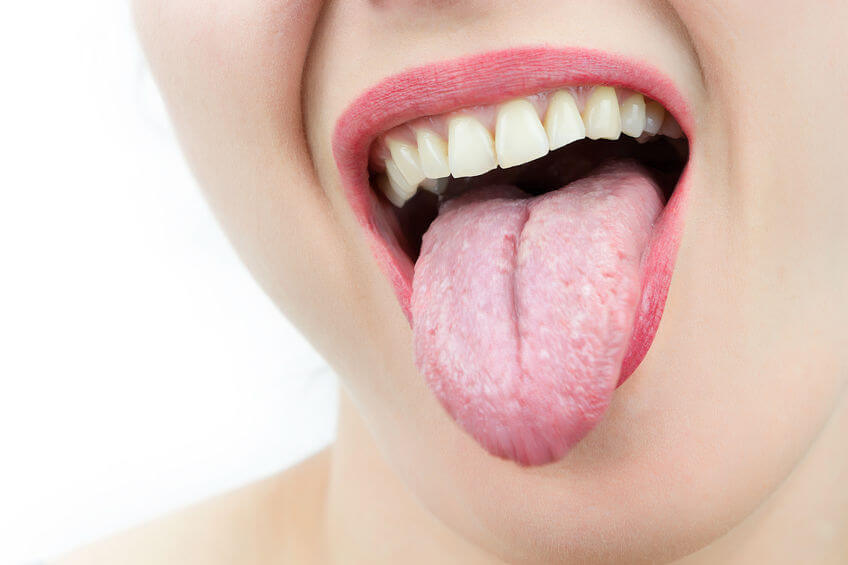Author: Lizzie Smith – blog last updated on Monday 10th July
White deposits on your tongue are an everyday but annoying problem. It has a negative influence on your oral health, including your teeth. Moreover, your breath will smell, which you really don’t want!
If you have a white or yellow tongue, it means it’s covered with a dirty layer of bacteria, food residues and saliva. This mixture, similar to dental plaque, easily gets caught between the rough tissue of your tongue. In most cases, a white tongue doesn’t indicate a disease, and you can quickly remedy this annoying ailment with the help of the following tips.
Tip 1: Good oral hygiene with good oral products
Brush your teeth twice a day for two minutes. Harmful bacteria can easily accumulate on the border of teeth and gums and between your teeth, so clean the interdental space with dental floss or brushes and use a good mouthwash. Make it a habit to clean these areas carefully daily.
Going to the dentist every six months for a check-up and/or to the dental hygienist for dental cleaning is also part of your basic oral hygiene.
Use toothpaste and mouthwash that contains safe, mouth-friendly ingredients.
JuliBrite chewing toothpaste and JuliBrite Mouthwash effectively clean your teeth and care for your gums whilst respecting your oral flora. At the same time, they neutralise the acidity in the mouth, which also helps to counteract and prevent white deposits on the tongue.

RyttPro toothpaste and mouthwash are also a good choice. RyttPro’s formula is based on stabilised chlorine dioxide, zinc and cetylpyridinium chloride (CPC). These ingredients effectively combat harmful oral bacteria without disturbing the natural balance of the oral flora. Rinsing your mouth with RyttPro Mouthwash after brushing and flossing ensures that the smelly sulfur gases produced by the bacteria in the tongue tissue are broken down at a molecular level. Perfect for a clean tongue and fresh breath!
Tip 2: Clean your tongue
No matter how well you brush your teeth, bacteria and food residues easily stick to and in the rough tissue of the tongue, particularly at the back.
We strongly advise against brushing your tongue with your toothbrush, no matter how easy that may seem. The bristles of your toothbrush are designed to remove plaque from hard and smooth tooth enamel. The soft, rough tissue of the tongue requires an entirely different treatment. The head of your toothbrush is also too high to clean the back of your tongue without making you gag.
So to remove the white deposits from your tongue, always use a tongue scraper or a special tongue brush.
Traditionally, a tongue scraper is an arc-shaped metal strip with handles. However, the more modern tongue scrapers are plastic, with one handle at the end and one or more arches. With a tongue scraper, you clean your tongue by pulling it over your tongue from back to front. The white tongue attack remains behind the arch or arches.
To remedy stubborn white or yellow deposits on the tongue, it’s better to use a special tongue brush. It has very fine hairs that clean the tongue between the tongue papillae without damaging the soft tissue and papillae.

RyttPro Gum & Tongue Foam works with a combination of sodium chlorite (stabilised chlorine dioxide), cetylpyridinium chloride (CPC) and zinc acetate. This kills the harmful bacteria without disturbing the natural balance of your oral flora. In the RyttPro Clean Tongue Kit, you’ll find the foam and an effective tongue cleaner that’s a scraper and tongue brush in one.
Tip 3: Prevent a dry mouth
Saliva is a natural protection for your teeth and helps keep the oral flora balanced. Dry mouth complaints, for which there are many possible causes, increase the chance of white or yellow deposits on the tongue.
Sometimes the cause of the lack of saliva can’t be eliminated. For example, if it results from medication or treatments such as chemotherapy. If you can’t remove the cause, don’t use agents that further dry out and acidify the oral mucosa. In addition to mouth-friendly toothpaste and mouthwash, you can use Moist-R Refreshing Tongue Spray throughout the day to stimulate saliva production and moisturise the mucous membranes.

Sleeping with your mouth open can also cause dry mouth. During the night, saliva production decreases, and the mouth becomes even drier due to inhalation and exhalation. If this is the cause of your dry mouth complaints, the solution is in the TonsilFresh Dry mouth strap, which keeps your mouth closed while you sleep.
Tip 4: Live a healthy lifestyle
A healthy and varied diet, sufficient exercise, rest and sleep are essential for your general health. But your lifestyle also has a significant impact on your oral health. For example, a white tongue can occur due to stress. Bad habits such as smoking, too much alcohol and unhealthy food are also not conducive to your oral health. They promote the amount of harmful bacteria in your oral cavity, which contributes to white tongue.
Since food and drink go over your tongue, you should pay extra attention to this when remedying your white tongue. People who eat a lot of soft food are likelier to suffer from a white or yellow tongue. This is logical because soft food wears off the tongue papillae less than crunchy food. The less this wears off, the rougher the tongue becomes, meaning there’s more space for tongue plaque to get stuck. Apart from a healthy and varied diet with sufficient fruit and vegetables, ensure you regularly eat plenty of crunchy food.
Drinking enough water is necessary for your overall health, but also for your mouth. This is because water washes away bacteria and moisturises your mouth.
Tip 5: Pay attention to colds, flu and allergies
If you have a cold or the flu, extend your daily oral hygiene regime to your nose. The same applies if you’re suffering from allergies. The post-nasal drip is a natural reaction in which excess nasal mucus drains to the pharynx. During a cold, the mucus contains a lot of bacteria, which eventually ends up on the back of the tongue.

While you can’t stop this post-nasal drip, TonsilFresh Nasal Sinus drops can ensure the nasal mucus doesn’t transport even more harmful bacteria to your tongue.
When should you see a doctor?
A disturbed bacterial balance in the mouth usually causes the white or yellow deposit on your tongue. The tips above should resolve the situation within a few weeks.
However, sometimes a white tongue signals there’s more to it. For example, with specific tongue diseases, where the tongue shows other colours or feels like it’s burning. An oral yeast infection (Candida albicans) also turns the tongue white.
If you suspect another cause for your white tongue, or if you’re experiencing other symptoms, you should consult your doctor.
Sources
Health Line: 5 Reasons to Scrape Your Tongue and How to Do It
NHS: Sore or white tongue

